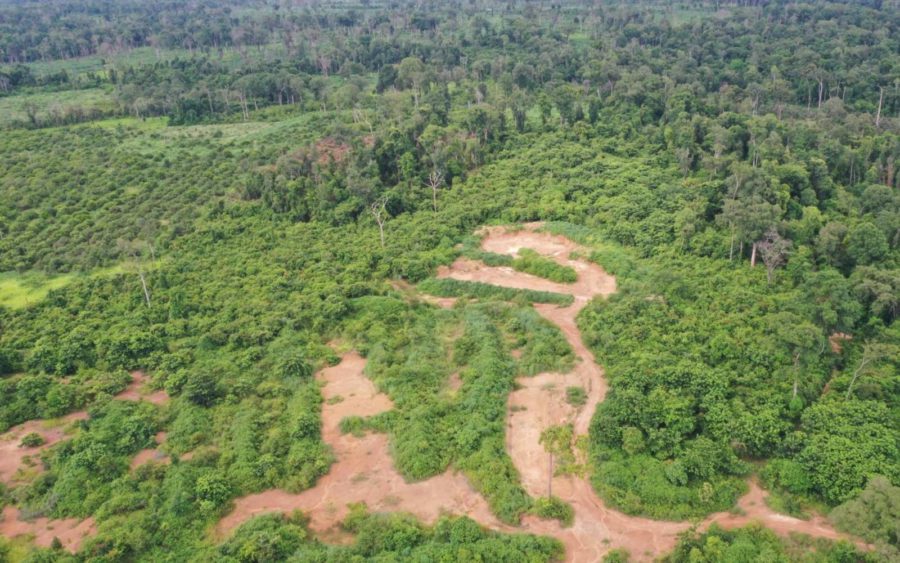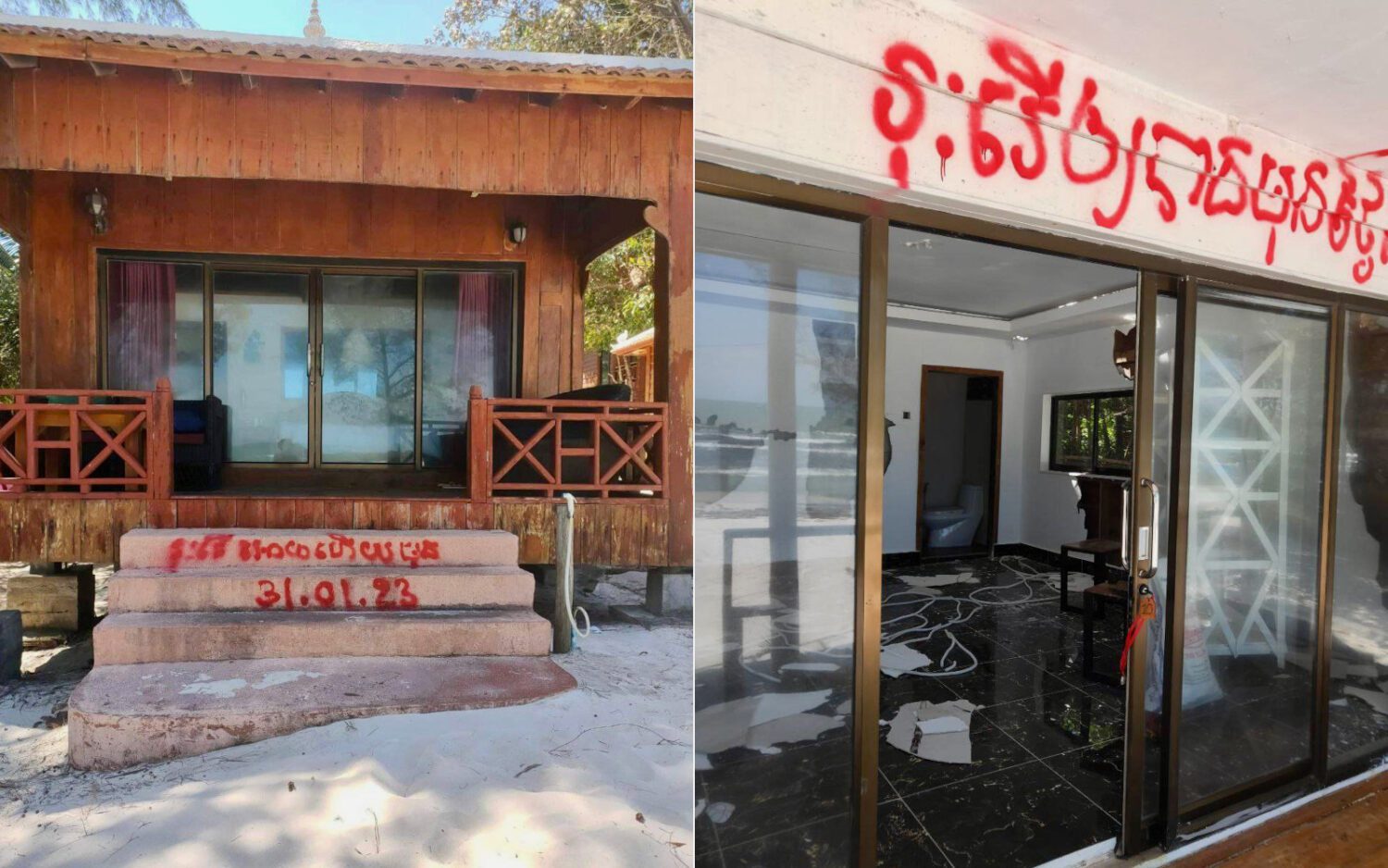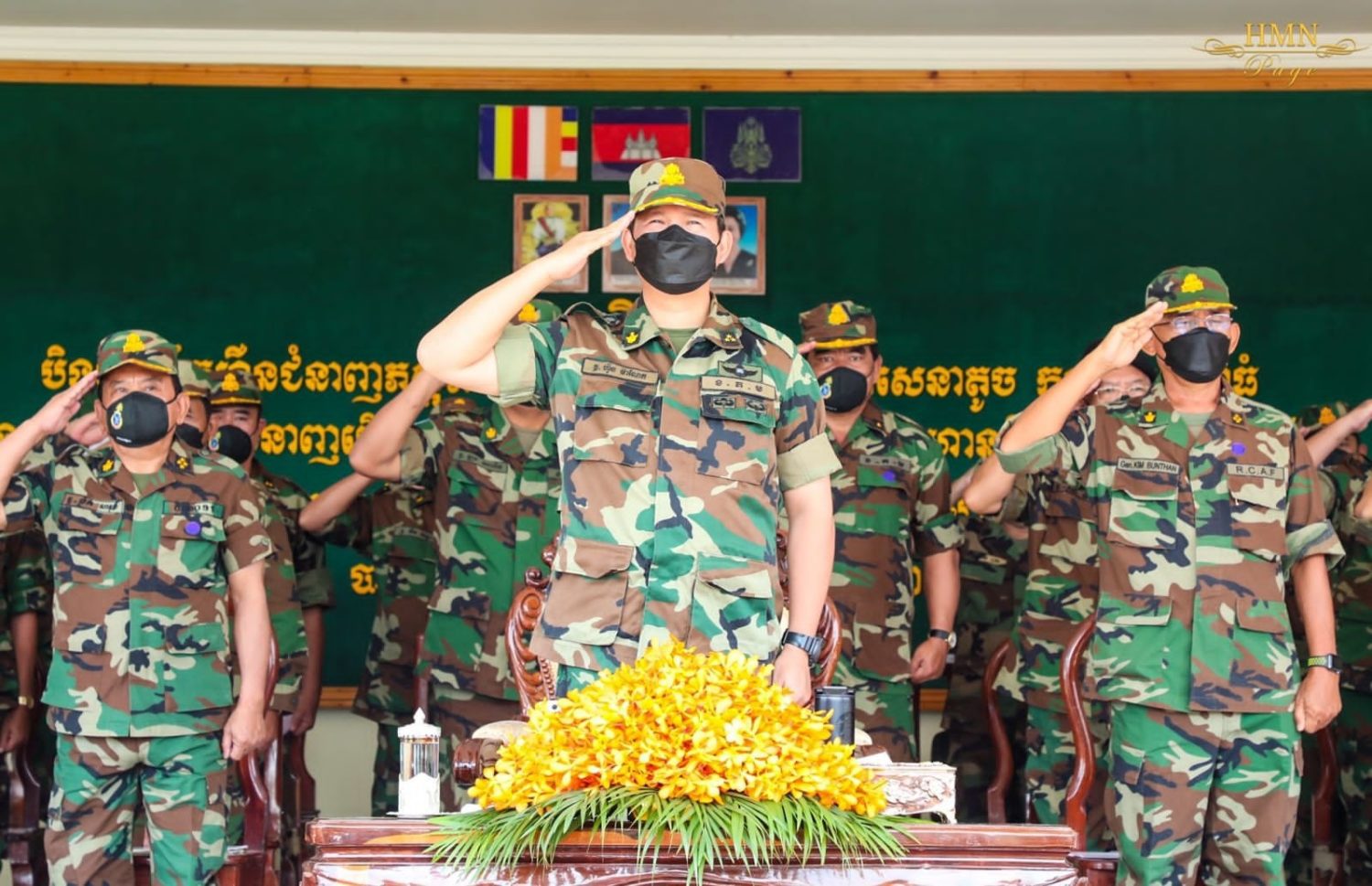CORRECTED Jan. 28 9:25 a.m—Forest watchers in 2020 filed 90 percent fewer reports of illegal logging amid officials’ threats against community patrols, according to an international research report, as one advocate said young people were refraining from joining patrols out of fear of repercussions.
Using a combination of satellite data and alerts from community forest patrollers, the report by a coalition of local NGOs and European institutions said Prey Lang in 2020 suffered the greatest tree cover loss by percentage in the two decades studied.
Three wildlife sanctuaries in Cambodia’s northern landscape — Prey Lang, Prey Preah Roka and Sorng Roka Vorn — lost a combined 10,000 hectares of forest in 2020, according to the report, with both Prey Lang and Prey Preah Roka seeing 80 percent of that loss come within the last five years. The report follows up on 2020 forest loss and canopy disturbances data published by satellite imagery service Global Forest Watch.
Monitors on the ground in the Prey Lang extended landscape are being increasingly threatened, said Ida Theilade, a Denmark-based researcher and co-author on the report.
The report found that community patrollers in Prey Lang submitted 90 percent fewer reports of logging, transportation and other environmental threats in 2020 than they had in 2019, while Prey Preah Roka observers submitted 88 percent fewer entries to a data collection app that allows researchers to observe and analyze illegal logging in the sanctuaries. The report attributed those data points to restrictions around the Covid-19 pandemic, and a ban by the Environment Ministry on community forest patrols.
Theilade said the app also has a feature to track threats reported by forest patrollers, and she has observed an increase in threats reported by app users. The threats come from both authorities and private security guards employed by logging operations, she said.
“We see an increase in the number and severity of the threats to the community patrol members. This includes threats to property, family members, threats of arrests by authorities and [threats of] killings,” she said.
She told VOD that the data were collected from a total 100 smartphones submitting on-the-ground reports from the two wildlife sanctuaries, and she did not know how many total patrollers were participating in these community patrols because there will usually a small group will use one of the smartphones, many of which were supplied by the NGO coalition. Theilade added that there was a high turnover rate of patrollers, but that’s because community patrolling is a voluntary, time-consuming and strenuous activity.
When he goes into the forest to monitor forests and work with young provincial residents, Heng Kimhong, an advocacy officer at Cambodian Youth Network, meets those who live in and around the forests. They tell him they are finding evidence of logging everywhere, especially after community patrols were effectively banned in 2020, Kimhong said.
“We know as well that the ministry and government do not allow [patrols], but the local community, they live inside the protected areas,” he said. “Wherever [we go] in the protected area, we can find the logging cases.”
The majority of community patrollers in the northern landscape are older individuals who have been monitoring the forests for decades, Kimhong said.
“Less young people are engaged to protect the forests because they’re very concerned when they hear the government and the Environment Ministry spokesman warn the community to protect and engage in protecting nature,” he said. “I’m also concerned about that — if less people are involved to protect the forest. In the future we will lose those [forest patrol] members.”
Environment Ministry spokesperson Neth Pheaktra said he was “not concerned about it at all” when asked if ministry crackdowns had discouraged young people from participating in environmental protection.
“We are actually having good cooperation with Protected Areas Communities and NGO partners who have goodwill to protect and conserve Cambodia’s remaining natural resource,” he said in a message. “The Cambodian people are now more environmentally conscious.”
Though the ministry has also reported rises in forest crimes, Kimhong said that patrols by community members were the best way to prevent that. His organization continues to engage with young people in the provinces covered by Prey Lang and Prey Preah Roka, hoping that they will either take care of the land in their provincial hometowns, or bring their skills and passion back if they pursue education in the capital.
Theilade, the report’s co-author, said she already expects that illegal logging has increased in 2021 based on satellite images and reports from patrollers, but it will take a few more months to process last year’s satellite data.
“It is observed that rangers do not even man the ranger posts any longer, timber flows from the reserve not only at night but also in day-time,” she said in a message. “The absence of community forest patrols has led to increased impunity and rapid increase in illegal logging and land conversion.”
When asked whether rangers onsite in Prey Lang and Prey Preah Roka were declining, Pheaktra said that the ministry was in the process of replacing rangers who retired or died, without specifying how many ranger vacancies it was trying to fill.
Though he said the ministry did not need to respond to a third party’s reports, Pheaktra disputed the existence of large-scale natural resource offenses in Prey Lang and other protected areas, saying there were only small-scale crimes. He added that the ministry intends to eliminate deforestation by 2030 as part of the country’s REDD+ plan, or protecting trees for investments from high-emitting countries and companies.
“This is the little remaining concern that the Environment Ministry and the relevant authorities are continuing to responsibly enforce the law,” he said.
Theilade said she was “extremely worried” about the safety of patrollers, but the onus was on the government to protect community members engaged in protection on a natural resource, rather than ban them and sometimes take legal action.
She acknowledged that the government has actively denied the validity of previous reports by Prey Lang Community Network, but said these deforestation reports are instead intended for both Cambodian nationals and the international community.
“We are aware that the present government seems determined to raze Prey Lang to the ground. However, we also note the undaunted determination and courage of the civil society in doing the right thing; i.e. fight against unplanned and illegal deforestation and climate change.”
CORRECTION Jan 28. 9:25 a.m.: Prey Lang, Prey Preah Roka and Sorng Roka Vorn wildlife sanctuaries lost almost 10,000 hectares of tree cover in 2020, not since 2001 as previously reported.













